Related Research Articles

The Choctaw are a Native American people originally based in the Southeastern Woodlands, in what is now Alabama and Mississippi. Their Choctaw language is a Western Muskogean language. Today, Choctaw people are enrolled in three federally recognized tribes: the Choctaw Nation of Oklahoma, Mississippi Band of Choctaw Indians, and Jena Band of Choctaw Indians in Louisiana.
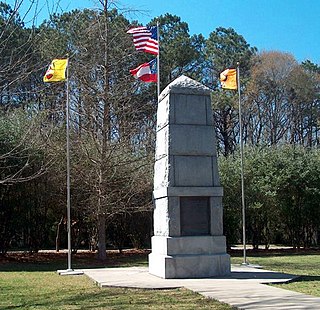
The Trail of Tears was the forced displacement of approximately 60,000 people of the "Five Civilized Tribes" between 1830 and 1850, and the additional thousands of Native Americans within that were ethnically cleansed by the United States government.
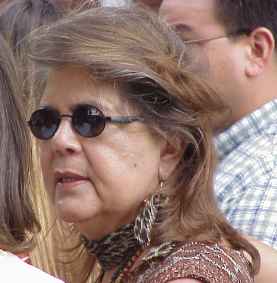
Wilma Pearl Mankiller was a Native American activist, social worker, community developer and the first woman elected to serve as Principal Chief of the Cherokee Nation. Born in Tahlequah, Oklahoma, she lived on her family's allotment in Adair County, Oklahoma, until the age of 11, when her family relocated to San Francisco as part of a federal government program to urbanize Indigenous Americans. After high school, she married a well-to-do Ecuadorian and raised two daughters. Inspired by the social and political movements of the 1960s, Mankiller became involved in the Occupation of Alcatraz and later participated in the land and compensation struggles with the Pit River Tribe. For five years in the early 1970s, she was employed as a social worker, focusing mainly on children's issues.
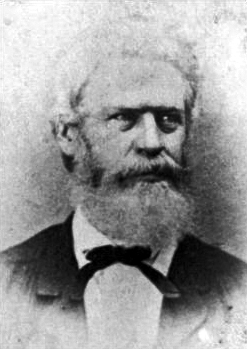
Douglas Hancock Cooper was an American politician, soldier, Indian Agent in what is now Oklahoma, and Confederate general during the American Civil War.
Native American studies is an interdisciplinary academic field that examines the history, culture, politics, issues, spirituality, sociology and contemporary experience of Native peoples in North America, or, taking a hemispheric approach, the Americas. Increasingly, debate has focused on the differences rather than the similarities between other ethnic studies disciplines such as African American studies, Asian American studies, and Latino/a studies.

The Choctaw Nation of Oklahoma is a Native American reservation occupying portions of southeastern Oklahoma in the United States. At roughly 6,952,960 acres, it is the second-largest reservation in area after the Navajo, exceeding that of eight U.S. states. The seat of government is located in Durant, Oklahoma.
The Mississippi Band of Choctaw Indians is one of three federally recognized tribes of Choctaw people, and the only one in the state of Mississippi. On April 20, 1945, this tribe organized under the Indian Reorganization Act of 1934. Their reservation included lands in Neshoba, Leake, Newton, Scott, Jones, Attala, Kemper, and Winston counties. The Mississippi Choctaw regained stewardship of their mother mound, Nanih Waiya mounds and cave in 2008. The Mississippi Band of Choctaw have declared August 18 as a tribal holiday to celebrate their regaining control of the sacred site. The other two Choctaw groups are the Choctaw Nation of Oklahoma, the third largest tribe in the United States, and the Jena Band of Choctaw Indians, located in Louisiana.
LeAnne Howe is an American author and Eidson Distinguished Professor in the Department of English at the University of Georgia, Athens. She previously taught American Indian Studies and English at the University of Minnesota and at the University of Illinois at Urbana-Champaign.

The history of Oklahoma refers to the history of the state of Oklahoma and the land that the state now occupies. Areas of Oklahoma east of its panhandle were acquired in the Louisiana Purchase of 1803, while the Panhandle was not acquired until the U.S. land acquisitions following the Mexican–American War (1846–1848).
Fort McCulloch was a Confederate military fort built by CSA Brigadier General Albert Pike in the Indian Territory during the American Civil War after the Battle of Pea Ridge.
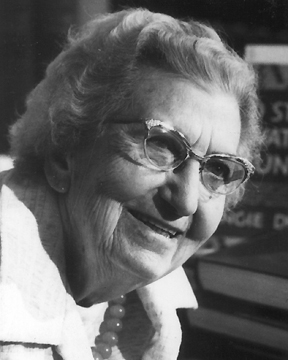
Angie Elbertha Debo, was an American historian who wrote 13 books and hundreds of articles about Native American and Oklahoma history. After a long career marked by difficulties, she was acclaimed as Oklahoma's "greatest historian" and acknowledged as "an authority on Native American history, a visionary, and an historical heroine in her own right."

The Choctaw Youth Movement (CYM) was a Choctaw nationalist grassroots movement born in the late 1960s in response to efforts by the federal government to terminate the Choctaw Nation. It was formed, in part, as a tribal-centric movement to counter the Pan-Indianism of other Native rights groups, such as the American Indian Movement. As opposed to AIM, the Choctaw Youth Movement practiced non-confrontational, peaceful activism, and advocated cultural revitalization and the readoption of tribal language, and taking pride in the distinctness of being Choctaw. The defense of the tribal culture and history took precedence over maintaining inter-tribal alliances.

Harry James Watson "Jimmy" Belvin was a Native American educator who served as an Oklahoma State Representative and Senator. He was the first elected principal chief of any of the Five Civilized Tribes in the 20th century, and the longest serving principal chief of the Choctaw Nation of Oklahoma. He saw his tribe through termination, restoration, and a rebirth of Native Pride. He was a polarizing leader, seen by some as a semi-dictator who held onto the office of principal chief and used his power to advocate for complete assimilation into the dominant society, suppressing Choctaw traditions, language and ceremonial practices as undesirable remnants of an unrefined history. To others, he was a well-liked, populist leader, who went door-to-door talking with tribe members, informing them on issues, and trying to develop the means the alleviate the poverty and unemployment they faced.
James Lawrence McDonald (c. 1801 — September 1831), was a member of the American Indian tribe called the Choctaw and the first Native leader of his generation to be trained in the American legal system. Thus, he is known as the first Native American lawyer. He was also the first Native activist to make the case for Indian rights directly to American political leaders and to negotiate for those rights in a formal agreement. McDonald did not believe in the use of force in resisting American westward expansion. Instead, he believed that political negotiations between Native American leaders and the United States would be more effective in the fight against the displacement of Natives and would allow for the long-term survival of Native American communities. McDonald urged the U.S. Congress to protect the rights of Native Americans and delayed the removal of his tribe from ancestral lands. As an advisor to Choctaw chiefs and eventual lawyer of the tribe, McDonald successfully negotiated peace treaties with the United States federal government. These negotiations allowed fair compensation for previously ceded land that was undervalued in earlier agreements. He also promoted programs of Indian education and wrote on behalf of the elected tribal governments. McDonald’s work as a lawyer and political activist paved a new path in which future Native American leaders were able to defend the rights of their territory using the American legal system. His career marked the birth of a new approach to federal power, and by extension, the beginning of political activism that was to inspire tribal leaders across the continent.
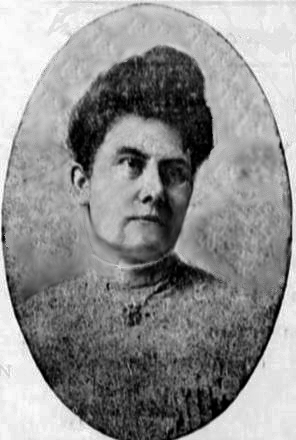
Czarina Conlan (1871-1958) was a Choctaw-Chickasaw archivist and museum curator. She worked at the Oklahoma Historical Society museum for 24 years. She founded the first woman's club in Indian Territory and served as the chair of the Oklahoma Indian Welfare Committee of the Oklahoma State Federation of Women's Clubs for 12 years. She was the first woman elected to serve on a school board in the state. Although the Attorney General of Oklahoma ruled she could not serve, she defied the order and completed a two-year term on the Lindsay School Board.
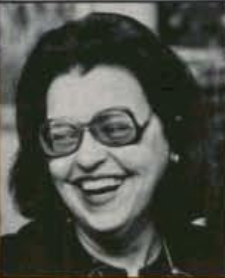
Valjean McCarty Hessing was a Choctaw painter, who worked in the Bacone flatstyle. Throughout her career, she won 9- awards for her work and was designated a Master Artist by the Five Civilized Tribes Museum in 1976. Her artworks are in collections of the Heard Museum of Phoenix, Arizona; the Philbrook Museum of Art in Tulsa, Oklahoma; the Southern Plains Indian Museum in Anadarko, Oklahoma; and the Wheelwright Museum of the American Indian of Santa Fe, New Mexico, among others.
Mary Adair is a Cherokee Nation educator and painter based in Oklahoma.
Henrietta Mann is a Native American academic and activist. She was one of the designers of the University of California, Berkeley, the University of Montana and Haskell Indian Nations University's Native American studies programs. In 2000 she became the first American Indian to hold the endowed chair of Native American studies at Montana State University and was honored with the Montana Governor's Humanities Award. She retired in 2004 and became a special advisor to the president of Montana State University.
Joan Brown is an American artist, illustrator and educator. She is of Cherokee and Creek descent from Oklahoma. Her work is of the Bacone school style.
The History of the Choctaws, or Chahtas, are a Native American people originally from the Southeast of what is currently known as the United States. They are known for their rapid post-colonial adoption of a written language, transitioning to yeoman farming methods, having European-American lifestyles enforced in their society, and acquiring some customs from Africans they enslaved.
References
- 1 2 3 4 5 6 7 Lee, Tanya (2 August 2011). "Mother of Native American Studies Programs Retires from UNC, Heads for Bacone College". Indian Country. Retrieved 11 June 2015.
- ↑ "Clara Sue Kidwell - Biography". Vocal and Verbal Arts Archives. Retrieved 12 June 2015.
- 1 2 "Native American Authors: Clara Sue Kidwell, 1941-". ipl2. College of Information Science in Technology of Drexel University. Retrieved 12 June 2015.
- ↑ Cox, Beverly; Jacobs, Martin (March 2004). "Oklahoma Feast" . Native Peoples Magazine. 17 (3): 22. Retrieved 12 June 2015.
- 1 2 3 4 5 6 7 8 Scanlon, Jennifer; Cosner, Shaaron (1996). American Women Historians, 1700s-1990s: A Biographical Dictionary. Westport, Connecticut: Greenwood Press. pp. 132–134. ISBN 0313296642 . Retrieved 12 June 2015.
- ↑ Kidwell, Clara Sue (March 2011). "American Indian Studies as an Academic Discipline". American Indian Culture & Research Journal. 35 (1): 27–31. doi:10.17953/aicr.35.1.04638323085j4659. ISSN 0161-6463.
- 1 2 Thiel, Mark G. (2005). Bataille, Gretchen M.; Lisa, Laurie (eds.). Native American Women: A Biographical Dictionary (Taylor & Francis eLibrary ed.). Taylor & Francis Books. pp. 171–173. ISBN 9781135955878 . Retrieved 12 June 2015.
- ↑ "Library Resource Finder: Table of Contents for: Sisterhood is forever : the women's anth". Vufind.carli.illinois.edu. Retrieved 2015-10-15.